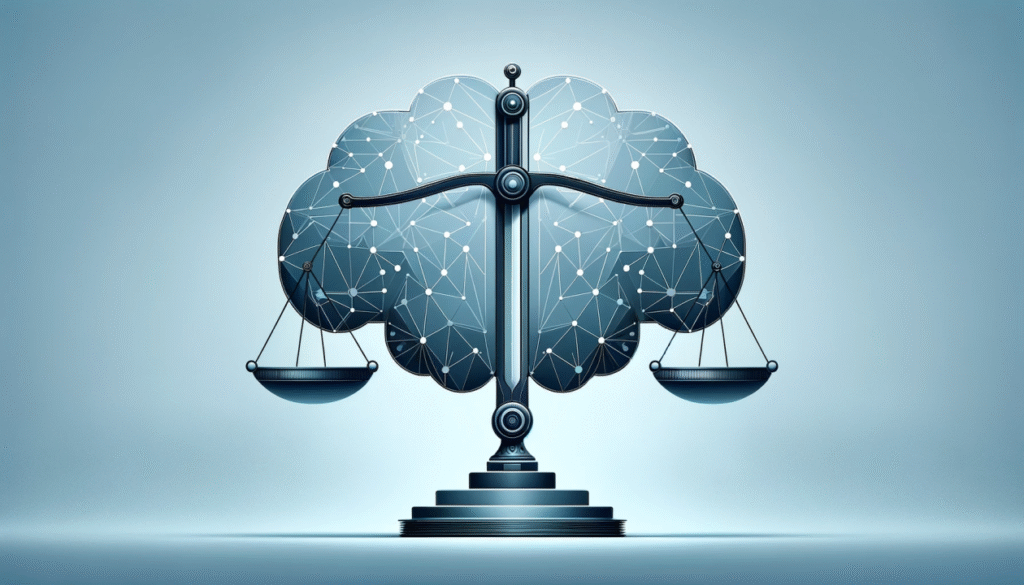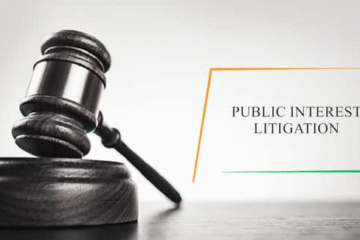
This article is written by Kashish Varshney, Barkatullah University, Bhopal, an intern under Legal Vidhiya
ABSTRACT
In an age increasingly defined by algorithms and automation, the Indian Constitution is a living reminder of human dignity, deliberation, and democratic ethos. This article scrutinizes the evolving relationship between constitutional values and artificial intelligence (AI), not out of technological awe, but in the language of a profoundly human desire for liberty, equality, and justice. With artificial intelligence emerging as a driver of judicial processes, administrative decrees, and even predictive policing, the question arises: is it conceivable that technology premised on probability and data can align itself with a constitution based on rights and empathy? Rather than looking at AI as a neutral tool, this paper addresses its implications within the framework of the Constitution—specifically its relations with Article 21 (right to life and liberty), Article 14 (equality before the law), and the doctrine of separation of powers. It takes into account recent judicial remarks, policy-making, and ethical concerns that arise the moment machines begin to go between and mediate human experiences. The goal is not to rule out innovation but to ensure that it does not displace the fundamental values of our jurisprudence. Through a careful study of case law, institutional trends, and normative principles, the paper argues for a constitutional ethic that places human oversight, transparency, and dignity above technological convenience.
KEYWORDS
Artificial Intelligence, Constitution of India, Judicial Process, Fundamental Rights, Supreme Court, Privacy, Due Process, Article 21.
INTRODUCTION
In 2023, a Kerala district court silently added AI transcription software to help judges record proceedings. It was greeted as a step in the direction of judicial efficiency but woke a muted disquiet among legal academics and lawyers. Could a machine, however precise, ever record the nuances of human evidence, the weight of silence, or the feeling in a pause? This moment, which seemed bureaucratic, was a more profound shift, one in which technology began to insinuate itself into the holy space of adjudication. Artificial intelligence is no longer a distant innovation; it is part of governance, surveillance, and even judicial decision-making. But the Constitution of India, written after the colonial era and infused with the spirit of human dignity, was never meant to embrace non-human actors. It is speaking in the language of rights, duties, and dialogue, and not codes. The conflict between AI and the Constitution is not just technological; it is metaphysical. Article 21, assuring the right to life and liberty,[1] has been held to incorporate privacy, autonomy, and procedural justice. In Justice K.S. Puttaswamy v. Union of India, the Supreme Court held privacy to be a part of human freedom and dignity.[2] Can AI based on data extraction and inductive reasoning be compatible with such values?
This essay addresses that question not to impede technological advancement, but to guarantee that it does not undermine the constitutional promise. It investigates how AI intersects with essential rights, judicial autonomy, and democratic accountability. By doing so, it insists on a constitutional ethic that prioritizes human oversight over automation and dignity over efficiency.
JUDICIAL USE OF AI AND CONSTITUTIONAL SAFEGUARDS
The courtroom has always been a space where human judgment meets legal reasoning. It is not just a place for interpreting statutes; it is where stories are heard, emotions are weighed, and justice is felt. So, when artificial intelligence begins to enter this space, even in seemingly minor ways, it raises questions that go far beyond efficiency. It compels us to ask: can a machine ever grasp the heft of silence in a witness’s voice? Can it comprehend the cultural backstory behind a pause or the trauma behind a testimony? Over the past decade, the Indian judiciary has hesitantly played with AI tools, transcription software, translation tools, and even document summarization. They are presented as administrative measures, designed to alleviate the workload of judges and streamline proceedings. But when technology starts influencing how evidence is captured, how arguments are analyzed, or how judgments are written, we need to stand back and think. The Constitution does not stand in the way of innovation, but it insists that all tools employed in the justice system promote the ideals of fairness, transparency, and human dignity. Article 14 of the Constitution promises equality before the law. This is not an outcome concern; it’s a process concern. If AI systems are deployed to summarize arguments or rank cases, and those systems have been trained on biased data or inaccessible reasoning, then the process is unfair. A litigant from the countryside, using a dialect the software fails to recognize, may have their voice distorted or drowned out. That is not a mere technical flaw; it is a constitutional breakdown. Article 21, which safeguards the right to life and personal liberty, has been read to encompass procedural fairness. The Supreme Court instructed us in Manoj v. State of Madhya Pradesh that sentencing needs to be based on individual cases, not mechanical rules.[3] If AI is ever used to recommend sentencing ranges or risk assessments, it never needs to supplant the judge’s discretion. The human factor in justice is not a defect; it is the very essence of constitutional morality. Even the doctrine of separation of powers comes into consideration. The judiciary needs to be independent not only from political pressure but also from technological pressure. If executive agencies start using AI tools that channel into judicial proceedings in the absence of proper regulation, the locus of control creeps up quietly. The Constitution was framed to avoid such overreach, even if it is in the garb of innovation. Finally, the judiciary must ensure that the use of AI is steered by constitutional norms. All tools must be made open, accountable, and auditable. The courtroom is not a laboratory. It is a space where lives are changed, rights are restored, and justice is delivered. Technology can assist, but it must never replace the human conscience that the Constitution so carefully protects.
AI AND THE CONSTITUTIONAL REVIEW: BETWEEN EFFICIENCY AND EROSION
Artificial intelligence is not by definition unconstitutional. But its use by the state requires it to be examined not merely technologically, but constitutionally. The Indian Constitution is not afraid of modernity; it welcomes it, as long as it remains subservient to the dignity and self-will of the individual. As AI systems are brought into the realm of governance, they have to go through the same prism that all state actions have to go through: legality, necessity, proportionality, and accountability. The classical constitutional review starts with Article 14, which ensures equality before the law and equal protection of the laws.[4] AI systems, particularly those that are employed in predictive policing or welfare distribution, tend to base their decisions on past data, which is a reflection of deep-seated social biases. If a disproportionate number of people from Dalit or Muslim groups are marked as “high risk” by an algorithm, the process is not only defective but also unconstitutional. The discrimination can be hidden in code, but the effect is evident and auditable. Article 21, guaranteeing the right to life and personal liberty, has been enlarged judicially to incorporate the right to privacy (Puttaswamy, 2017).[5] Such an AI system, which records, processes, or disseminates personal data without consent, violates this right. The state cannot outsource its constitutional obligations to a machine. Whether it is a face recognition program in a public place or an algorithm deciding who is eligible for ration cards, the individual must retain authority over their information and choices. Article 19(1)(a), freedom of speech and expression[6], is also involved. AI-based surveillance technologies can chill public discourse, protest, and dissent. Once the populace begins self-censoring out of fear of being profiled or flagged, the democratic space gets eroded not by law but by design. The constitutional safeguard is not in banning AI but in subsuming it within the sphere of judicial and legislative control. All AI systems utilized by the state need to be supported by a transparent legal framework, publicly released parameters, and channels for redress. The principles laid down in Puttaswamy—legality, necessity, proportionality, and procedural safeguards—must apply not just to data collection but to algorithmic decision-making itself. This is not a theoretical exercise. It is a constitutional imperative. The state cannot claim efficiency while bypassing accountability. Technology must serve the citizen, not silence them.
ALGORITHMIC BIAS AND THE FRAGILITY OF EQUALITY
Inherited Prejudices in Digital Form
AI is usually imagined as an emotionless, ideological, or prejudiced-free tool. Yet, this supposition dissolves on closer inspection. AI machines are trained from data, and data mirrors the world as it exists, not as it should exist. In India, where caste, gender, and religious disparities are ingrained in social as well as institutional infrastructures, algorithmic bias turns not only into a technical malfunction but also a constitutional crisis. When predictive policing technology disproportionately marks Dalit or Muslim areas as “high-risk” using past arrest rates, it is not forecasting crime; it is reinforcing bias. This is a betrayal of the promise of Article 14, which enshrines equality before the law. The algorithm does not perceive context, history, or structural injustice; it perceives patterns. And when those patterns are informed by centuries of exclusion, what is created is digital casteism.
Opacity and the erosion of Accountability
The threat of algorithmic bias is made worse by secrecy. Nearly all AI deployed in government, whether for the distribution of welfare, surveillance, or judicial support, is proprietary. Their reasoning lies veiled behind corporate confidentiality, which means that the concerned citizens can neither comprehend, criticize, nor appeal decisions. This discourages Article 19(1)(a), which guarantees the right to information and expression.[7] If an applicant for welfare is rejected by an algorithm, they should be informed why. If a protestor is identified by facial recognition technology, they have the right to know how. There can be no accountability and hence no justice without transparency.
Judicial Review in the Age of Algorithms
Here, the judiciary needs to adapt. Courts have traditionally been protectors of constitutional freedoms, scrutinizing legislation and executive action for consistency with basic liberties. That responsibility now needs to be applied to algorithms. If an AI system employed by the police or courts leads to unfair outcomes, it cannot escape judicial review. The Constitution does not accept stealthy breaches, by man or machine. In Anuradha Bhasin v. Union of India, the Supreme Court reasserted that limitations on rights have to be legal, necessary, and proportionate.[8] These values need to extend to algorithmic governance as well. The equality right cannot be outsourced to a black box.
LEGISLATIVE OVERSIGHT AND THE ETHICS OF AI GOVERNANCE
The Constitutional Need for Legal Frameworks
As the role of artificial intelligence in public decision-making increases, India lacks a specific legal framework to govern its usage. Not only is this a policy lacuna, but it is also a constitutional issue. The Indian Constitution requires any action impacting fundamental rights to be supported by law, motivated by legitimate purpose, and subject to proportionality. In Justice K.S. Puttaswamy v. Union of India, the Supreme Court established the fourfold test for any invasion of privacy: legality, necessity, proportionality, and procedural safeguards.[9] Such principles have to be applied to AI systems, particularly those operating in surveillance, welfare, and law enforcement. When algorithms decide who gets benefits, who gets investigated, or whose words get recorded in court, those decisions need to be traceable back to a source in the law. Otherwise, the state runs the danger of exceeding its constitutional limits. Parliament has to intervene not to curb innovation, but to make it responsible. A specific AI law needs to specify valid uses, require transparency, and ban deployments that present intolerable risks to rights.
Ethical Principles in a Constitutional Democracy
Above legality, AI regulation needs to be based on ethics. The Constitution is not merely a legal instrument; it is an ethical guide. It talks of dignity, equality, and fraternity. These principles need to be the basis of how AI is developed, implemented, and examined. Systems that have an impact on human lives need to be explainable, auditable, and reversible. People need to have the right to contest decisions made by algorithms, request human intervention, and access redress. Ethical governance also involves respecting the boundaries of technology. Not all issues need a technological solution. In domains such as criminal sentencing, protest surveillance, or child protection, the harm caused by automation can exceed the benefits. The law should set limits not merely on technical possibility, but on constitutional values.
CONCLUSION
In a time where algorithms shape decisions made secretly by human hands, the Indian Constitution reminds us of what must never be automated: dignity, justice, and the right to be heard. This paper has navigated the awkward intersection of AI and constitutionalism, showing how bias, complexity, and uncontrolled automation erode the very meaning of justice. The Constitution is not against technology but requires that all instruments to be used in public life be accountable to its ethos. Parliament must legislate cautiously, courts must remain human when deciding, and society must be vigilant. The goal is not to resist innovation but to make it serve people, not against them. In the end, it’s not code, but conscience, that must lead us. Even in the age of machines, it is human beings who must be at the heart of law.
REFERENCES
- Constitution of India 1950
- Supreme Court of India, Judicial Use of AI: Policy Paper, e-committee (2023).
- Usha Ramanathan, A Right to Privacy in India, 10 International Journal on Human Rights (2013).
[1] Constitution of India 1950, art 21
[2] Justice K.S. Puttaswamy (Retd) and another v. Union of India and others AIR 2017 SC 4161
[3] Manoj and Ors. v. State of Madhya Pradesh
[4] Constitution of India 1950, art 14
[5] Constitution of India 1950, art 21.
[6] Constitution of India 1950, art 19(1)(a).
[7] Constitution of India 1950, art 19(1)(a).
[8] Anuradha Bhasin v. Union of India AIR 2020 SC 1308.
[9] Justice K.S. Puttaswamy (Retd) and another v. Union of India and others AIR 2017 SC 4161
Disclaimer: The materials provided herein are intended solely for informational purposes. Accessing or using the site or materials does not establish an attorney-client relationship. The information presented on this site is not to be construed as legal or professional advice, and it should not be relied upon for such purposes or used as a substitute for advice from a licensed attorney in your state. Additionally, the viewpoint presented by the author is personal.




0 Comments